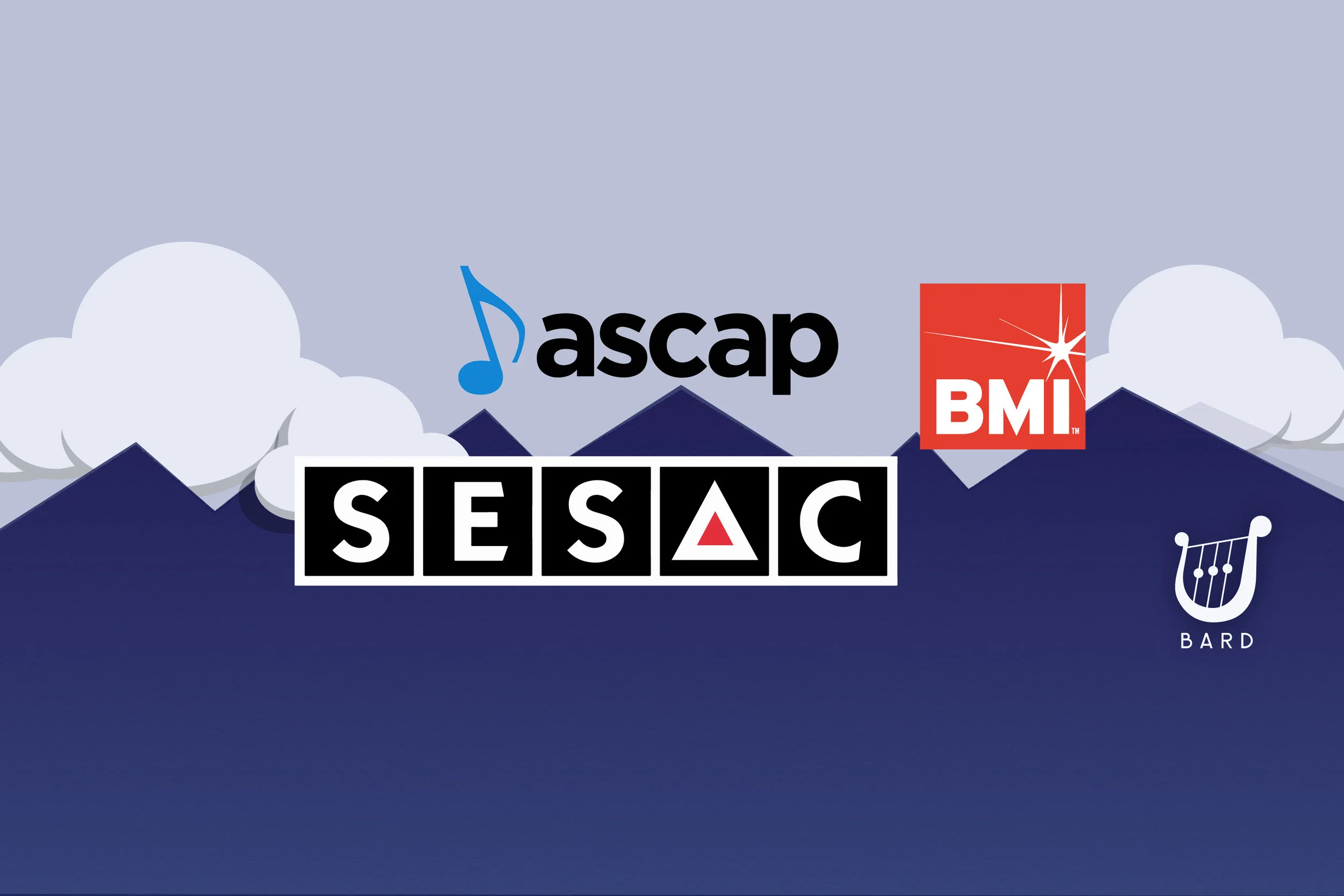Part 2 - Performance Rights Organizations
Last week we talked about music Performance Royalties, and how you, as a media creator, might have to deal with it. In short, if an artist is from a big music label, they can command specific contracts that grant them the right to royalties. However, most artists get residual royalties through something called a PRO, or Performance Rights Organization. This has little impact on you, or your creations, as they only take revenues generated by the organizations who benefit from the audience hearing the music. In most cases, it only requires you to fill out a cue sheet to the PRO.
This provides us with a good segue to talk about what exactly PROs are, and how they came about.
What is a PRO?
A Performance Rights Organizations, sometimes called performing rights societies, date back to the late 1800s. Back then they more or less had the same function as they do today. The job of the PRO back then was to make sure the appropriate music composer was paid royalties when an orchestra used their composition to entertain an audience. You might think the orchestra would have been liable for the royalties, but it was ultimately the theatre or venue that had to pay up because they were the organization that benefited from the performance of the music. The first such PRO organization came about in France, but was later copied by most European countries to manage the same process of getting music composers, producers, and musicians paid. In the USA, ASCAP (American Society of Composers, Authors, and Publishers) was first to arrive, later followed by BMI (Broadcast Music Incorporated), then SoundExchange, and now the more obscure GMR (Global Music Rights). As new methods of broadcast came about, so too did new PRO organizations and methods of tracking royalties for both musicians, and contributors.
At first it was theaters and concert halls, then it was radio followed closely by TV, now we have digital streaming services. The providers of programming services are the organizations that have the contract in place with the PRO to make sure what goes across their concert halls, airwaves, and data streams is recorded and paid for.
How Does a PRO Collect Royalties?
The way a PRO works with these different venues and companies is to directly contract with each of them. Most PROs have a sort of blanket license in place with venues and places (think Malls, Airports, Coffee Shops). They pay a flat fee, while their fee gets split across the artists and composers whose music was used. Radio and TV are more explicit in how they pay out. They very carefully have to note which piece of music, and how much of each piece of music was used when it goes on air. They are generally recording music start/stop time, audience reach, and frequency. The TV station, radio station, or broadcaster pays on each individual music piece they play. Digital streaming services work on a very different structure that negotiates a fraction of a cent per song played per play. Each song has some sort of rate attached to it. The digital streaming services reports all of their song metrics back to the PRO for final royalty payment. That means Star Bucks, the bar down the street, YouTube, and HBO have contracts in place with PROs to make sure royalties are going back to musicians and composers whose music plays across their services.
What Are the Different PROs?
The United States alone has BMI, ASCAP, SESAC, SoundExchange, and GMR. Why so many? Each has a specific kind of music catalog they cover, but its in service to the composer, not so much the media creator who uses it. It’s really there to give the composers and musicians options for representation and royalty collection. For each country, there is a different PRO that covers the performance royalties for music played in their respective countries. There is a full list that can be referenced here.
However, the only thing you really need to worry about is reporting the content you use to the PRO with a cue sheet.
What is a Cue Sheet and When Do You Need One?
The cue sheet is a piece of documentation that tells the PRO, the licensor, and the broadcaster how a piece of music was used in a media. The PRO should receive the documentation in case they need to dispute usage with a broadcaster, and the broadcaster should get the documentation so they can properly report it to the PRO.
You might have noticed that “broadcaster” is said repeatedly. There is a reason for that. Between YouTube, a local Starbucks, and a TV station, the only entity that need information to track usage is the TV station. As mentioned earlier, Starbucks pays a flat fee, and YouTube tracks and reports with ContentID. This means that you only really need to file a cue sheet when a piece of media you create is going to be played on TV or radio. The PROs still recommends filing one, however. .
That’s it! Band-aid off. You can rest easy knowing that you are doing your part in making sure all of the super talented composers and musicians are actually getting compensation for their hard work.
This concludes this series in Performance Rights and PROs as part of Sonic Bloom’s ongoing articles about music rights. Sonic Bloom is also the creator of Bard: a tool to help creators find and license music faster.

